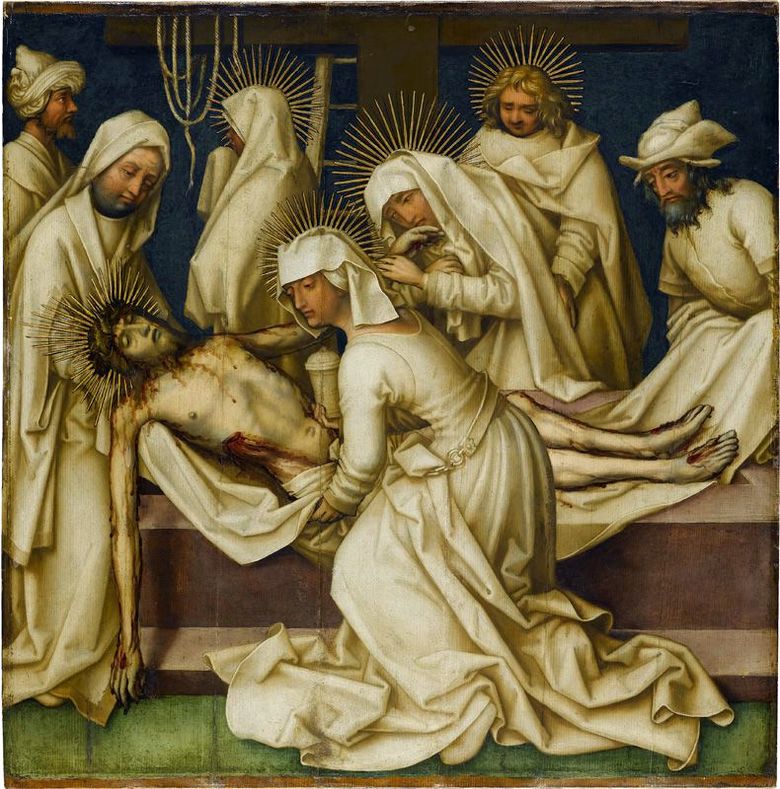
“The Passion of the Lord in gray tones” are considered one of the main creations of Hans Holbein the Elder. The cycle was named after the gray monochrome color scheme, made in the grisaille technique, imitating a sculpture. These are 12 paintings about the last episodes of Christ’s earthly life.
The mention of the removal of the body of Jesus from the cross and the position of the coffin is found in all four Gospels. This event was portrayed in one of the paintings of the Lords’ Estates by Hans Holbein the Elder. Here are all the main participants of the action: Joseph Arimathea, Deva Marie I and John the Evangelist, Nicodemus, myrrh-bearers.
The same evening, shortly after all that has been accomplished, the famous member of the Sanhedrin, the rich man Joseph of Arimathea, comes to Pilate. Joseph was a secret disciple of Jesus Christ. He was a kind and righteous person, who did not participate in the council, in condemning the Savior. He asked Pilate for permission to remove the body of Christ from the cross and bury it. Pilate was surprised that Jesus Christ died so soon. He called the centurion who guarded the crucified, learned from him when Jesus Christ died, and let Joseph take the body of Christ for burial.
After the removal from the cross, Jesus was placed on the shroud – a burial cloth and smeared his body with precious incenses from a mixture of myrrh and aloe.
The Virgin Mary in this scene holds the hand of Christ. In the picture there are myrrh-bearers. One of them – in the foreground – holds a vessel with the world in his right hand. Mary Magdalene, Maria Iosieva and other women were there and watched as they believed the body of Christ. Returning home, they bought a precious world, then to anoint the body of Christ with this world, as soon as the first, great day of the feast passed, which, according to the law, should have all been in peace.
 Lamentation of Christ by Anthony Van Dyck
Lamentation of Christ by Anthony Van Dyck Christ in front of Caiaphas by Hans Holbein
Christ in front of Caiaphas by Hans Holbein Christ before Pilate by Hans Holbein
Christ before Pilate by Hans Holbein The Scourging of Christ by Hans Holbein
The Scourging of Christ by Hans Holbein The Murder of Christ by Hans Holbein
The Murder of Christ by Hans Holbein La position dans le cercueil – Hans Holbein
La position dans le cercueil – Hans Holbein Self-Portrait by Hans Holbein
Self-Portrait by Hans Holbein The Last Supper by Hans Holbein
The Last Supper by Hans Holbein